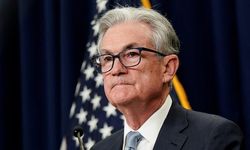After rising sharply due to the energy crisis following Russia's invasion of Ukraine, prices have now halved compared to 2023.
Climatic and economic factors played a major role in this decline, with countries such as France and Germany experiencing one of the mildest winters in 34 years, which contributed to lower demand for heating.
On the other hand, the fact that natural gas storage levels in Europe have reached a five-year high is another factor in the downward momentum in prices. The European Union's (EU) gas reserves stand at 65.9 percent, Germany at 71.56 percent, Italy at 60.3 percent and France at 51.3 percent.
The global downturn in manufacturing activity since 2022 has also significantly affected industrial demand for gas, especially in Europe.
Another key factor pushing prices down was the strong performance of renewables and nuclear power generation. Wind and solar power showed a significant improvement in 2023 compared to 2021 and 2022, and hydroelectric power performed close to its seasonal high of the last five years.
Nuclear power generation performed better in the second half of 2023 and continued in 2024.
Natural gas outlook for 2024: Bank of America and Goldman Sachs
Francisco Blanch, a strategist at Global Research Commodities, a financial analysis and research service offered by Bank of America, said that the global economy, especially if it continues to remain sluggish, is likely to be a key factor in the rise of the global commodities market.
However, Blanch also highlighted some risks that could lead to a surprising rise in natural gas prices. A revival in manufacturing activity is likely to lead to an increase in global industrial gas demand, while disruptions in the Red Sea region could create a negative picture in Europe. Moreover, regulatory approval requirements for LNG terminals pose a significant risk of delays to the planned 2024 capacity, potentially constraining global supply growth in the second half of 2024 and beyond.
Eurozone economy recovers from recession but fails to return to growth
Goldman Sachs commodity analysts Samantha Dart and Daniel Moreno recently cut their TTF natural gas price forecasts from €41/MWh to €31/MWh, suggesting that the expected global gas oversupply this period could be significant and that Europe may need to offer incentives to reduce supply and avoid storage tightness next summer.But the two experts argue that despite high storage levels in late winter, Europe has not yet solved its energy crisis.According to Dart and Moreno, it will take another winter for the risk of excessive price increases to subside.
The structural deficit in European natural gas has not been fully addressed, as increased LNG supplies have not fully compensated for lost Russian imports. This means that European gas prices will remain sensitive to supply disruptions or demand increases, especially during the winter months.















